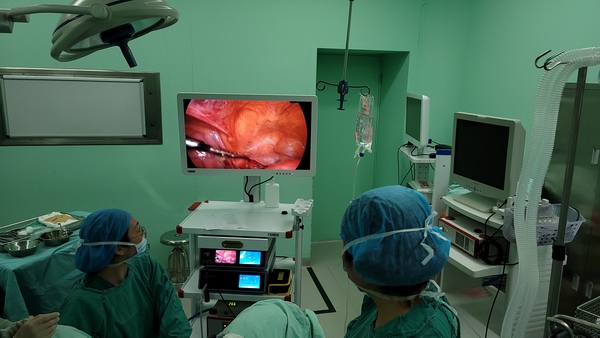Endoscopy Surgery: Advancements in Medical Imaging for Better Diagnosis and Treatment
Endoscopy is a minimally invasive surgical procedure that allows doctors to examine the interior of the human body using an endoscope, a flexible tube with a camera and light source attached to its end. Endoscopy is widely used for diagnostic and therapeutic purposes in various medical fields, including gastroenterology, pulmonology, gynecology, urology, and otolaryngology.

One of the key components of an endoscopy procedure is the endoscope camera system. The camera system provides high-quality images of the internal organs and tissues, allowing doctors to visualize and diagnose abnormalities such as tumors, ulcers, inflammation, or bleeding. In recent years, there have been significant advancements in endoscopy camera technology, especially in the area of high-definition (HD) cameras.
An HD camera produces images with higher resolution, color accuracy, and contrast compared to standard definition (SD) cameras. This allows doctors to see even small details, such as blood vessels, lesions, or polyps, more clearly, and improves the accuracy of diagnosis and treatment. Moreover, HD cameras have better low-light performance, reducing the need for additional light sources and making the procedure safer for patients.
Another significant development in endoscopy surgery is the incorporation of video recording and image management systems. With these systems, doctors can record the entire procedure in high-definition video, allowing them to review the images later and share them with other specialists for consultation or research. The video recording also serves as a useful educational tool for training new doctors and students.
Furthermore, endoscopy surgery has become safer and more effective with the development of advanced endoscopes and accessories. These include flexible endoscopes that can reach difficult-to-access areas, such as the pancreas or bile ducts, without the need for invasive surgery. Additionally, endoscopic accessories such as biopsy forceps, snares, and cautery tools allow doctors to perform therapeutic interventions, such as removing polyps or tumors or stopping bleeding.
In conclusion, endoscopy surgery has revolutionized the way doctors diagnose and treat various medical conditions, thanks to advancements in endoscope camera technology and accessories. With HD cameras and video recording systems, doctors can obtain more accurate and detailed images of the internal organs, leading to better diagnosis and treatment outcomes. As the technology continues to evolve, we can expect even more improvements in endoscopy surgery in the future.
Leave a comment